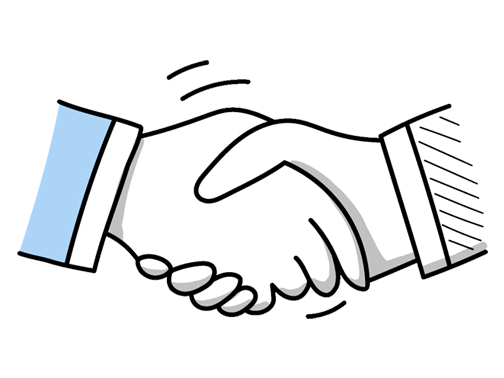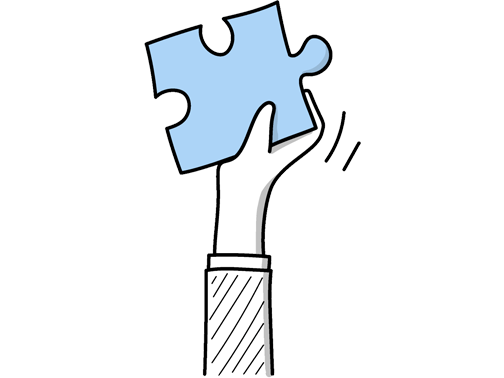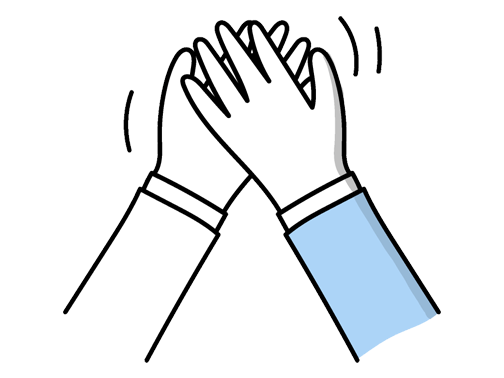Service Desk Analyst Interview Questions (2025 Guide)
Find out common Service Desk Analyst questions, how to answer, and tips for your next job interview
Practice Interviews Online - Identify your strengths and weakness in a realistic Service Desk Analyst mock interview, under 10 minutes
Practice Now »Service Desk Analyst Interview Questions
This question assesses your ability to effectively utilize tools and resources to diagnose and resolve technical problems efficiently. You need to explain that you use diagnostic software, follow a step-by-step troubleshooting approach, and collaborate with colleagues when needed to ensure accurate and timely solutions.
Example: When tackling technical issues, I usually start by consulting internal knowledge bases and documenting error logs to understand the problem clearly. I also use diagnostic tools like remote desktop and ticketing systems to track progress. If needed, I collaborate with colleagues or escalate to specialists to ensure a swift resolution. This mix of resources and teamwork helps me resolve issues efficiently and keeps users satisfied.
What they want to know is how you carefully create and manage user accounts while ensuring security and handling common issues efficiently. You need to explain the steps to create and configure accounts in Active Directory, how to resolve typical problems like unlocking accounts, and emphasize following security best practices such as assigning only necessary permissions.
Example: Setting up user accounts in Active Directory usually starts with creating the account and assigning the right permissions based on the user’s role. From there, I configure group memberships and apply security policies to ensure compliance. If issues like login failures arise, I check account status, password settings, or group policies. Keeping accounts regularly reviewed helps maintain security and smooth access for everyone involved. For example, removing access promptly when staff leave is key.
What they want to know is how you manage competing tasks efficiently while ensuring critical issues are addressed promptly to minimize business disruption. You need to explain that you first assess each request’s urgency and impact, then organize your work using a ticket system, and keep customers informed with clear communication about timing.
Example: When I have several requests, I start by understanding which issues affect business operations the most and which customers are waiting longest. I then organize tasks based on that, often using a simple list or digital tools to keep track. Throughout, I keep customers updated on progress and realistic timelines, so they know what to expect. This approach helps me stay focused and ensures urgent issues get the attention they need promptly.
This question helps interviewers understand your communication and problem-solving skills when working with others. You need to say that you listen to all sides calmly, seek common ground, and focus on finding a solution that benefits the team.
Example: When conflicts arise, I focus on understanding everyone’s perspective by listening carefully. I believe open communication helps to clear up misunderstandings and find common ground. For example, in a previous role, I helped mediate a disagreement about task priorities by encouraging the team to discuss their concerns openly, which led to a practical solution everyone supported. Keeping the atmosphere respectful and solution-focused usually brings the best results.
This question aims to assess your problem-solving skills and how you handle technical challenges under pressure. You need to clearly describe the issue, the steps you took to diagnose and fix it, and the positive outcome or lesson learned.
Example: In a previous role, a user couldn’t access their email, but initial checks showed nothing wrong server-side. I methodically worked through network settings, permissions, and device configurations. Eventually, I discovered a conflict caused by a recent security update on their machine. After rolling back the update and adjusting settings, access was restored. It was a reminder that sometimes the root cause isn’t immediately obvious and requires calm, thorough investigation.
This interview question aims to assess your teamwork and communication skills, showing how you collaborate and assist others to achieve common goals. In your answer, describe a specific situation where you helped a colleague, explaining what you did and the positive outcome that followed.
Example: In my previous role, a colleague was struggling with a complex ticket involving multiple systems. I took some time to walk them through the troubleshooting steps, explaining how each part connected. This not only helped resolve the issue faster but also boosted their confidence in handling similar problems independently in future. Supporting each other like this keeps the team moving smoothly.
This question assesses your ability to communicate complex technical information in an accessible way, which is crucial for customer satisfaction and problem resolution. You should explain that you simplify language using analogies, actively listen to understand the customer’s needs, and stay patient and empathetic throughout the interaction.
Example: I focus on keeping things straightforward, avoiding jargon, and explaining solutions in everyday terms. I listen carefully to what the customer is really asking and try to understand their frustrations. Staying patient helps me build trust, so they feel comfortable asking questions. For example, when helping someone reset their password, I guide them step-by-step, checking they’re following along before moving on.
This question assesses your problem-solving skills and technical knowledge in managing software issues systematically. You need to explain your step-by-step approach to identifying and resolving installation problems, mention the tools or methods you use, and highlight how you communicate with users or escalate when needed.
Example: When handling software installation or issues, I start by understanding the user’s problem clearly, then check compatibility and system requirements. I use tools like event viewer or log files to pinpoint errors. If needed, I guide users step-by-step or escalate to the next level. For example, once I resolved a recurring install error by identifying a missing update, ensuring smooth setup thereafter. Clear communication is key throughout.
This interview question assesses your communication skills and ability to manage conflicts professionally. You need to explain that you listen carefully to understand the other person's perspective, stay calm and polite while clarifying the issue, and then provide clear information to resolve the misunderstanding.
Example: When misunderstandings happen, I first make sure to listen fully and clarify what they’re saying without interrupting. Keeping calm helps me address any confusion without escalating things. For example, once a customer was upset about a delayed ticket update—I calmly rephrased their concern, confirmed the details, and explained the next steps clearly, which helped rebuild trust and prevented further miscommunication. I always aim to keep conversations clear and respectful.
Hiring managers ask this question to see how well you collaborate and communicate under pressure to solve technical problems. In your answer, clearly describe your role in the team, how you communicated effectively, and the steps you took together to identify and resolve the issue.
Example: In a previous role, our team faced a network outage affecting multiple users. I coordinated closely with colleagues, sharing updates and troubleshooting steps to avoid duplication of effort. By actively listening and suggesting alternative approaches, we identified a faulty router quickly. My role was to communicate status to users and document the resolution, ensuring everyone stayed informed and the issue was resolved efficiently.
This interview question aims to assess your practical knowledge in identifying and resolving network problems efficiently. You need to explain your approach to detecting network issues, mention the diagnostic tools you use like ping or traceroute, and describe how you communicate and escalate problems to ensure timely resolution.
Example: In my previous role, I regularly monitored network performance and used tools like Wireshark and ping tests to pinpoint connectivity problems. Once, I identified a misconfigured router causing intermittent outages and worked closely with the network team to fix it quickly. I always ensure clear communication with users and stakeholders, keeping them updated until the issue is fully resolved. This approach helps maintain smooth service and user confidence.
What they want to see is your ability to proactively identify patterns in problems and apply effective solutions that improve service efficiency. You need to explain how you recognized the recurring issue, the actions you took to resolve it permanently, and the positive results that followed.
Example: In a previous role, I noticed the same printer error kept happening across different departments. After digging into the logs, I realised outdated drivers were causing the problem. I coordinated with IT to update all drivers and provided clear guidelines on maintenance. This cut related support tickets by half, freeing up time to focus on other issues and improving overall office productivity.
This question assesses your ability to keep accurate records and communicate effectively during issue resolution, which ensures clarity and accountability. You need to explain how you log each step in the ticketing system clearly, adjust your communication style for different audiences, and follow up with users to confirm the issue is fully resolved.
Example: When resolving an issue, I make sure to note each step clearly and in order, so anyone reviewing the ticket can follow the progress easily. I adjust how I communicate based on who I'm speaking to—technical details for the IT team, simpler explanations for users. After resolving, I check back with the user to ensure the solution is working and offer further help if needed. For example, I once guided a non-technical user through a password reset while keeping the IT log detailed.
This interview question assesses your versatility and technical adaptability across different platforms. In your answer, highlight your hands-on experience troubleshooting Windows, macOS, and Linux, and emphasize how you quickly resolve issues despite their differences.
Example: I’ve worked extensively with Windows, macOS, and Linux in previous roles, helping users troubleshoot everything from basic software issues to network problems. Whether guiding a novice through macOS updates or assisting a team with Linux command-line tasks, I enjoy adapting my approach to fit the user’s experience level and system specifics, ensuring they feel supported regardless of their technical background.
Interviewers ask this question to see how you manage stress and maintain professionalism while ensuring customer satisfaction. You need to say that you listen carefully without interrupting, stay calm and empathetic, then take ownership by explaining how you will resolve the issue and provide a clear timeframe.
Example: When a customer is upset, I focus on really understanding what’s causing their frustration and acknowledge their feelings. Staying composed helps me connect with them and ease the tension. I make sure they know I’m taking responsibility and explain clearly what I’ll do to fix the problem. For example, once a user was locked out of their account, and calmly walking them through the reset steps helped turn their frustration into relief.
Hiring managers ask this question to see if you take initiative and are truly committed to customer satisfaction. In your answer, briefly describe a specific situation where you exceeded expectations and explain the positive outcome for the customer.
Example: Sure. In a previous role, a user faced repeated login issues outside of my shift hours. I stayed late to identify a deeper system glitch, then coordinated with IT to fix it, preventing future disruptions. The user appreciated the proactive support, which helped maintain their productivity. It felt good to step beyond routine tasks and really make a difference when it mattered.
This interview question helps assess your ability to deliver excellent customer service by focusing on communication, problem-solving, and empathy. You should explain how you listen carefully to understand customer issues, address them promptly by finding root causes, and stay patient and positive to build trust.
Example: To ensure customer satisfaction, I focus on really listening to what the customer is saying, so I fully understand their issue. I aim to solve problems quickly but also keep them informed along the way. It’s important to stay patient and approachable, because sometimes just feeling heard makes a big difference. For example, once a frustrated user was calmed down simply by me explaining each step clearly and reassuring them throughout the process.
What they want to know is how you stay proactive and communicate clearly when you don’t have an immediate solution. You need to say that you methodically research alternatives while keeping users informed with timely updates to manage expectations.
Example: If I can’t find a solution right away, I stay patient and keep digging into different resources while narrowing down the issue step-by-step. I also make sure to keep the user informed about what I’m doing and set realistic expectations about timing. For example, once I faced a tricky software glitch and updating drivers didn’t help, so I escalated the issue while keeping the user updated, which kept everyone calm and on the same page.
This interview question helps employers understand how you collaborate and contribute within a team. You need to clearly explain your usual role, whether it's organizing, supporting, or leading, and why that role suits your skills and benefits the team.
Example: In a team, I usually take on the role of a reliable communicator, making sure everyone’s on the same page. For example, when troubleshooting issues, I coordinate between users and tech teams to find quick solutions. I find this helps keep things running smoothly and reduces misunderstandings, which is crucial in a fast-paced service desk environment. It’s important to support the team while staying approachable and clear.
Hiring managers ask this question to see how you ensure effective communication and collaboration within your team during incidents. You need to say that you use clear, timely updates through tools like ticketing systems, emails, or team meetings to keep everyone informed and aligned on issue status and resolutions.
Example: I make it a point to keep communication clear and consistent, often using shared channels like team chats or email updates to relay ongoing issues and their progress. If something urgent arises, I’ll organise quick briefings or huddles so everyone’s on the same page. For example, during a recent outage, a short daily update helped the team manage expectations and coordinate fixes smoothly.
Employers ask this to see if you can think critically and handle unfamiliar issues calmly and methodically. You need to say you break down the problem into smaller parts, use appropriate tools to gather information, ask users clear questions, and communicate effectively while working towards a solution.
Example: When I face a new issue, I start by gathering as much information as possible to understand it fully. I use available tools and resources to narrow down the cause, testing different solutions step-by-step. Throughout the process, I keep users informed and involved, ensuring they feel supported. For example, once I encountered a rare software glitch, and by methodically checking logs and updates, I identified the conflict and restored service quickly.
Hiring managers ask this question to see if you prioritize clear communication and accuracy to avoid misdiagnosis and wasted time. You need to say that you listen carefully without interrupting, ask clarifying questions to confirm understanding, and summarize the issue back to the customer before taking any action.
Example: I make sure to listen carefully to everything the customer shares, picking up on key details. If something isn’t clear, I ask straightforward questions to get a better picture. Before jumping in, I’ll repeat the issue back to them to confirm we’re on the same page. For example, once a user described a slow computer, and by summarizing, we realized it was actually a network issue, which saved time and resolved their problem quicker.
Hiring managers ask this question to see if you can communicate technical information clearly and patiently to non-technical users, which is key in a service desk role. In your answer, explain how you broke down the concept using simple language or analogies and how you checked for understanding while staying patient and supportive.
Example: In my previous role, a colleague struggled with understanding why their laptop was slow. I took time to listen, then explained the issue by comparing it to a busy motorway causing traffic jams. I avoided jargon, checked their understanding along the way, and stayed patient throughout. This helped them grasp the problem and feel more comfortable asking for help in the future.
This interview question aims to see if you actively keep your skills current and adapt to technological changes, which is vital in a service desk role. You need to say that you regularly follow trusted tech sources and apply new knowledge to improve your problem-solving at work.
Example: I regularly follow tech blogs and forums like TechRadar and Stack Exchange to keep up with industry news. I also subscribe to newsletters and attend webinars when I can. When I learn about a new tool or update, I try to see how it could streamline processes or solve common issues at work. This approach helps me stay prepared and support the team more effectively.
Questions like this assess your ability to manage teamwork and deadlines under pressure, which is crucial for a service desk analyst to maintain smooth operations. You should explain how you communicate regularly with your team, prioritize tasks effectively, and quickly resolve any problems to ensure projects finish on time and meet quality standards.
Example: To keep projects on track and up to standard, I stay in regular contact with my team to clarify responsibilities and timelines. I prioritise tasks based on urgency and impact, making sure resources are where they’re needed most. When challenges arise, I address them directly—like when a software glitch threatened a deadline, I quickly coordinated a workaround to keep us moving forward without compromising quality.
Ace your next Service Desk Analyst interview with even more questions and answers
Common Interview Questions To Expect
The interviewer is looking to see how you found out about the job opening. You can answer by mentioning a job board, company website, referral, or networking event.
Example: I actually found this position on a job board while I was actively looking for new opportunities. I was immediately drawn to the company's reputation and the job description matched my skills perfectly. I also heard great things about the company from a friend who works here, which made me even more excited to apply.
Candidates can answer by stating a specific salary range, mentioning their flexibility, or asking about the company's budget. Interviewers are looking for candidates who are realistic, confident, and have done their research on industry standards.
Example: I'm looking for a salary in the range of £25,000 to £30,000, but I'm open to negotiation based on the overall compensation package. I've done some research on industry standards and believe this range is fair for my level of experience and skills. Can you provide any insight into the company's budget for this position?
The interviewer is looking for your commitment to ongoing learning and growth in your field. You can answer by mentioning courses, certifications, conferences, or other ways you plan to stay current in your profession.
Example: I'm always looking to stay up-to-date in the IT field, so I plan on taking some online courses to expand my knowledge on new technologies. I'm also considering getting certified in ITIL to enhance my skills as a Service Desk Analyst. Attending industry conferences is another way I like to network and learn from other professionals in the field.
The interviewer is looking for examples of how you prioritize tasks, manage your time effectively, and handle stress in a fast-paced environment. Be honest and provide specific examples from your past experiences.
Example: Yes, I am able to handle multiple responsibilities at once. In my previous role as a Service Desk Analyst, I was responsible for managing incoming support tickets, troubleshooting technical issues, and providing timely solutions to users. I prioritized tasks based on urgency and impact, ensuring that all issues were resolved efficiently.
The interviewer is looking for insight into your personal motivations and what drives you to succeed in your career. Answers should demonstrate passion, dedication, and alignment with the company's values.
Example: What motivates me is the opportunity to help others and solve problems. I thrive in a fast-paced environment where I can use my technical skills to assist users and improve their experience. I am driven by the satisfaction of knowing I have made a positive impact.
Company Research Tips
The company's official website is a goldmine of information. Look for details about the company's history, mission, vision, and values. Pay special attention to the 'About Us', 'Our Team', and 'News' or 'Blog' sections. These can provide insights into the company culture, recent achievements, and future plans. For the Service Desk Analyst role, focus on the company's IT infrastructure and any mention of their customer service philosophy.
Tip: Look for any technical jargon or industry-specific terms used on the website. Understanding these can help you communicate more effectively during the interview.
Social media platforms like LinkedIn, Twitter, and Facebook can provide a more informal view of the company. Look at the company's posts, as well as comments and reviews from customers and employees. This can give you a sense of the company's reputation and how they interact with their audience. For a Service Desk Analyst role, look for any mentions of customer service interactions or IT issues.
Tip: Follow the company on social media platforms before the interview. This can show your interest in the company and keep you updated on any recent news.
The job description can provide valuable insights into what the company values in a Service Desk Analyst. Look for specific skills, experiences, and qualifications mentioned in the description. Also, pay attention to the language used - this can give you an idea of the company culture. For example, a company that uses formal language may have a more traditional culture, while a company that uses casual language may have a more relaxed culture.
Tip: Use the job description to tailor your responses during the interview. Highlight experiences and skills that match the job description.
Understanding the company's competitors can give you a broader view of the industry and the company's position within it. Look at the competitors' products, services, and customer reviews. This can help you understand the company's unique selling points and potential challenges. For a Service Desk Analyst role, understanding the IT landscape can help you suggest improvements or innovations during the interview.
Tip: Don't criticize the competitors during the interview. Instead, use your knowledge to highlight the company's strengths and how you can contribute to its success.
What to wear to an Service Desk Analyst interview
- Dark-colored business suit
- White or light-colored dress shirt
- Conservative tie
- Polished dress shoes
- Minimal and professional jewelry
- Neat and professional hairstyle
- Clean, trimmed fingernails
- Light use of perfume or cologne
- No visible tattoos or piercings
- Carry a briefcase or portfolio





